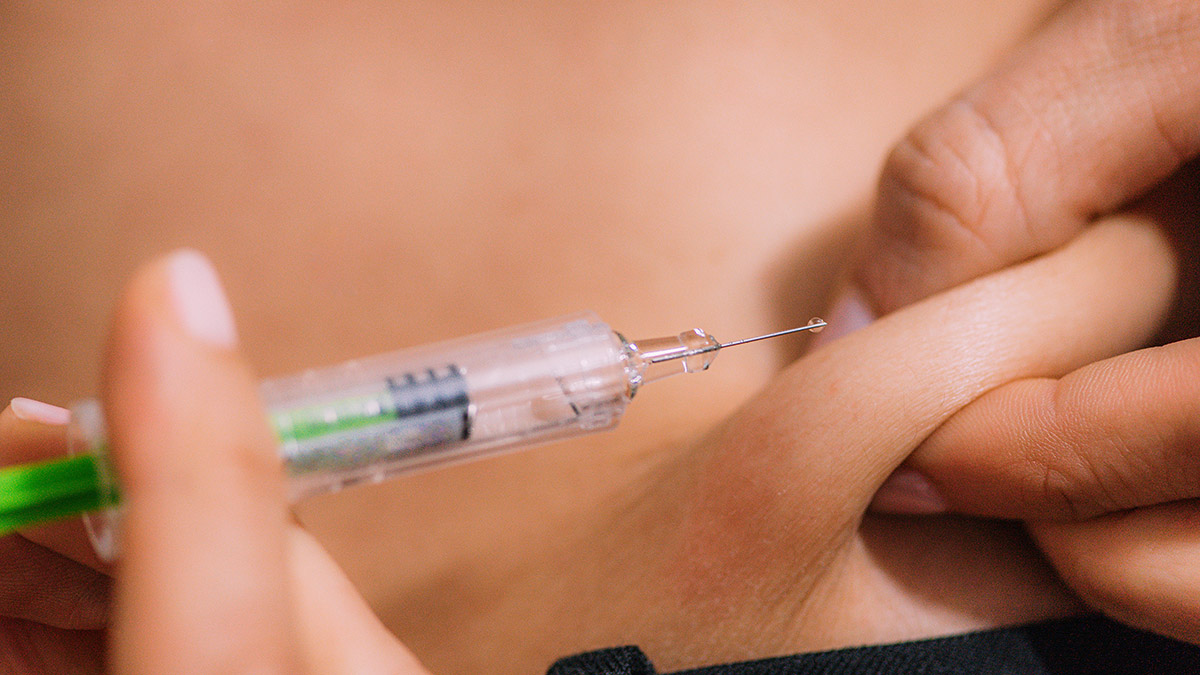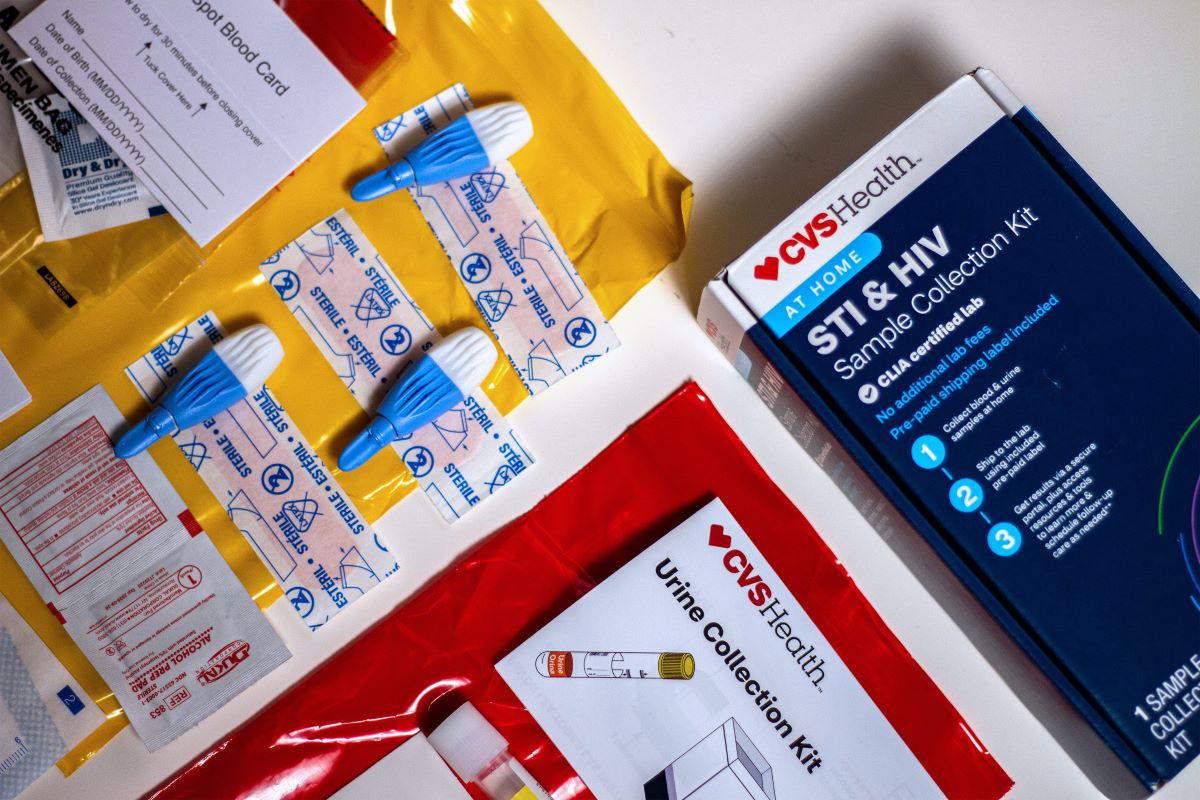

Finance
How Much Does A D&C Cost 2022 With Insurance
Published: November 13, 2023
Find out the cost of a D&C procedure in 2022 with insurance coverage. Get insights on financing options for your medical needs.
(Many of the links in this article redirect to a specific reviewed product. Your purchase of these products through affiliate links helps to generate commission for LiveWell, at no extra cost. Learn more)
Table of Contents
Introduction
Welcome to the world of personal finance, where having a solid understanding of money management is crucial for achieving financial stability and success. When it comes to navigating the complex realm of finance, it’s natural to have questions and seek guidance. That’s where the expertise of a financial advisor comes in.
A financial advisor is a professional who can provide invaluable knowledge and assistance in areas such as budgeting, investment planning, retirement strategies, and more. With their expertise, they can help individuals and families make informed decisions and achieve their financial goals.
But how do you choose the right financial advisor for your needs? With so many options available, it can be overwhelming to find the perfect fit. That’s why we’ve compiled this comprehensive guide to help you navigate the process and find the best financial advisor for you.
In this guide, we’ll explore the key factors to consider when selecting a financial advisor, including their qualifications, expertise, and reputation. We’ll also delve into the different types of financial advisors, such as certified financial planners (CFPs), registered investment advisors (RIAs), and more, to help you understand which type might be most suitable for your specific financial needs.
We’ll provide tips and advice on how to research and vet potential advisors, including using online resources, reading client reviews and testimonials, and conducting interviews. We’ll also discuss the importance of establishing clear communication and transparency with your advisor and how this can contribute to a successful and beneficial working relationship.
Additionally, we’ll touch on the topic of fees and compensation. It’s important to understand how financial advisors are compensated for their services, whether through fees, commissions, or a combination of both. We’ll break down the different fee structures and help you determine which one aligns best with your financial situation and goals.
Lastly, we’ll address the ongoing relationship with your chosen financial advisor. We’ll discuss the importance of regular check-ins, reassessing your goals, and making adjustments as needed. Your financial journey is not a one-time event but rather an ongoing process, and a strong and supportive relationship with your advisor can make a significant difference in achieving long-term financial success.
By the end of this guide, you’ll have a comprehensive understanding of how to select the right financial advisor for your specific needs and goals. Armed with this knowledge, you’ll be ready to embark on your financial journey with confidence and clarity.
Understanding Dilation and Curettage (D&C)
Dilation and Curettage, commonly referred to as D&C, is a medical procedure that involves widening the cervix (dilation) and removing tissue from the uterus (curettage). It is typically performed to diagnose and treat various gynecological conditions.
There are several reasons why a D&C may be recommended by a healthcare provider. One common reason is to investigate the cause of abnormal uterine bleeding. By removing and examining the tissue lining the uterus, doctors can determine if there are any abnormalities, such as polyps, fibroids, or pre-cancerous or cancerous cells.
Another reason for a D&C is to remove any remaining tissue in the uterus after a miscarriage or abortion. This helps ensure that the uterus is fully emptied and reduces the risk of infection or other complications.
In addition, D&C may be performed as part of a fertility evaluation or treatment. By examining the uterine lining, doctors can assess its thickness and identify any abnormalities that may affect fertility. D&C can also be used to remove polyps or scar tissue that may hinder conception or implantation of an embryo.
During the D&C procedure, the patient is usually placed under general or local anesthesia to minimize discomfort. The doctor will insert a speculum into the vagina to visualize the cervix and then gently dilate it. This allows for the insertion of a curette, a thin spoon-shaped instrument, which is used to scrape and remove the tissue lining the uterus. The removed tissue is sent to a laboratory for analysis.
Following the procedure, patients may experience mild cramping and bleeding for a few days, similar to a menstrual period. It is recommended to avoid sexual intercourse and strenuous activities for a week or two to promote healing.
It’s important to note that every D&C procedure is tailored to the individual’s specific needs and condition. The healthcare provider will thoroughly discuss the procedure, risks, and potential benefits with the patient prior to obtaining informed consent.
Now that we have a better understanding of what Dilation and Curettage entails, let’s explore some key information about the cost associated with this procedure and how insurance coverage can impact the overall expenses.
Overview of D&C Procedure
The Dilation and Curettage (D&C) procedure is a common medical intervention performed by gynecologists to diagnose and treat various gynecological conditions. It involves the widening of the cervix and scraping or suctioning of the tissue lining the uterus.
Before the procedure, the patient is typically given anesthesia to ensure their comfort and minimize pain. The type of anesthesia used may vary, ranging from local anesthesia to general anesthesia, depending on the complexity of the procedure and the patient’s individual needs.
To begin the procedure, the gynecologist will insert a speculum into the vagina to visualize the cervix. The cervix will then be dilated using a series of dilators or a medication to soften and open the cervix. This allows the gynecologist to access the uterus and perform the necessary diagnostic or treatment steps.
Once the cervix is adequately dilated, the gynecologist will use a curette, a spoon-shaped instrument, to gently scrape the uterine lining. This tissue is then collected and sent to a laboratory for further evaluation. In some cases, a suction device may be used instead of or in combination with the curette to remove the tissue.
The procedure is usually completed within 10 to 20 minutes, although it may take longer depending on the specific circumstances. After the procedure, the patient will be monitored for a short period to ensure their well-being and stability.
Following the D&C, it is common to experience some cramping and light bleeding, which typically resolves within a few days. It is important to follow the post-procedure instructions provided by the healthcare provider, which may include recommendations to rest, avoid strenuous activities, and refrain from sexual intercourse for a specified period of time.
While the D&C procedure is generally safe, like any medical intervention, it carries some risks. These risks can include infection, bleeding, damage to the cervix or uterus, and adverse reactions to anesthesia. However, it is essential to remember that the procedure is performed by trained healthcare professionals who take all necessary precautions and closely monitor the patient’s well-being throughout.
Now that we have a better understanding of the basic steps involved in a D&C procedure, let’s explore the factors that can influence the cost of this procedure.
Factors That Affect the Cost of D&C
The cost of a Dilation and Curettage (D&C) procedure can vary depending on several factors. Understanding these factors can help patients better comprehend the financial implications associated with the procedure. Here are some key factors that can affect the cost of a D&C:
- Medical Facility: The choice of medical facility where the D&C is performed plays a significant role in determining the cost. Hospitals tend to have higher costs compared to outpatient clinics or ambulatory surgical centers.
- Geographic Location: The cost of the procedure can vary depending on the geographic location. Areas with a higher cost of living or limited healthcare resources may have higher D&C costs.
- Healthcare Provider’s Expertise: The experience and expertise of the healthcare provider performing the D&C can influence the cost. Specialists or highly experienced gynecologists may charge higher fees for their services.
- Anesthesia: The type of anesthesia used in the procedure can impact the cost. General anesthesia is typically more expensive than local or regional anesthesia, as it requires the presence of an anesthesiologist or nurse anesthetist.
- Additional Procedures or Tests: In some cases, additional procedures or tests may be necessary during the D&C, such as hysteroscopy or ultrasound. These additional procedures can contribute to the overall cost of the D&C.
- Health Insurance Coverage: Health insurance coverage greatly affects the out-of-pocket expenses for a D&C. The cost can vary depending on the insurance plan, deductible, co-pays, and co-insurance percentages.
It is important for patients to consult with their healthcare provider and insurance company to get a clear understanding of the estimated cost and coverage for a D&C procedure. Understanding these factors can help patients make informed decisions and plan for any potential financial implications.
Next, we will explore the importance of having insurance coverage for a D&C procedure and how it can impact the overall cost for patients.
The Importance of Insurance Coverage for D&C
Having insurance coverage is crucial when it comes to the cost of medical procedures, including a Dilation and Curettage (D&C). Insurance coverage helps alleviate the financial burden and provides access to necessary healthcare services. Here are some reasons why insurance coverage is essential for a D&C procedure:
Financial Protection: D&C procedures can be expensive, especially if additional tests or procedures are needed. Insurance coverage ensures that patients do not bear the full cost of the procedure out of pocket, reducing the financial strain associated with medical expenses.
Accessibility to Healthcare Services: Without insurance coverage, some individuals may find it challenging to afford necessary medical procedures. Insurance ensures that patients have access to the healthcare services they need, including D&C procedures, without delay or significant financial burden.
Preventive Care and Early Intervention: Insurance coverage often includes coverage for preventive care and screenings. In the case of D&C, insurance may cover the cost of diagnostic tests that may identify potential issues early on, allowing for timely intervention and potentially preventing more serious complications later.
Comprehensive Healthcare Coverage: Insurance coverage typically includes a wide range of healthcare services beyond just the D&C procedure itself. This includes pre-operative consultations, post-operative care, follow-up visits, and any necessary medications or additional treatments for related conditions.
Peace of Mind: Knowing that you have insurance coverage for a D&C procedure can provide peace of mind during an already challenging time. It allows you to focus on your health and well-being without the added stress of worrying about the financial aspect.
It’s important to note that insurance coverage for a D&C procedure can vary depending on the specific insurance plan, including deductibles, co-pays, and co-insurance percentages. Patients should review and understand their insurance policy’s coverage details to effectively plan for the potential costs associated with a D&C procedure.
In the next section, we will delve into how insurance policies can influence the cost of a D&C procedure.
How Insurance Policies Influence D&C Costs
Insurance policies play a significant role in influencing the costs associated with a Dilation and Curettage (D&C) procedure. Understanding how insurance policies work can help patients navigate the financial aspects of their healthcare. Here are some ways in which insurance policies can influence D&C costs:
Deductibles: Most insurance policies have a deductible, which is the amount that the insured individual must pay out of pocket before the insurance coverage kicks in. The deductible amount can vary, and patients are generally responsible for paying their deductible before insurance starts covering the cost of the D&C procedure.
Co-pays and Co-insurance: Insurance policies often include co-pays or co-insurance, which are the portions of the cost that patients are responsible for after the deductible has been met. For example, a policy may require patients to pay a fixed co-pay for the D&C procedure or a percentage of the total cost as co-insurance. These out-of-pocket payments can significantly contribute to the overall cost of the procedure.
In-Network vs. Out-of-Network Providers: Insurance policies typically have a network of preferred providers. When patients receive care from in-network providers, the insurance company usually covers a higher percentage of the cost compared to out-of-network providers. It is important to verify the network status of the healthcare provider performing the D&C to ensure maximum insurance coverage.
Prior Authorization and Referrals: Some insurance policies require prior authorization or referrals from a primary care physician before undergoing a D&C procedure. Failure to obtain these approvals can result in reduced or no coverage for the procedure, leading to higher out-of-pocket costs.
Policy Coverage Limits: Insurance policies may have coverage limits or exclusions for certain procedures, including D&C. It’s crucial to review the policy details to understand any limitations or exclusions that may impact insurance coverage and affect the overall cost of the procedure.
Out-of-Pocket Maximums: Insurance policies often have a maximum limit on the amount individuals are required to pay out of pocket during a specific period. Once this out-of-pocket maximum is reached, the insurance company typically covers 100% of the remaining costs, providing financial relief for patients who require extensive medical care, including D&C procedures.
Understanding the specifics of insurance policies and how they can influence the cost of a D&C procedure is essential for patients. It is recommended to review the insurance policy details, communicate with the insurance provider, and consult with the healthcare provider to have a comprehensive understanding of the potential out-of-pocket costs associated with a D&C procedure.
In the following section, we will explore the average cost of a D&C procedure with insurance coverage.
Average Cost of D&C with Insurance Coverage
The cost of a Dilation and Curettage (D&C) procedure can vary based on several factors, such as the location, type of facility, and individual insurance plan. While costs can vary significantly, understanding the average cost of a D&C procedure with insurance coverage can provide a general idea of what patients may expect. It’s important to note that these figures are approximate and can vary depending on individual circumstances and insurance policies.
In general, the average cost of a D&C procedure with insurance coverage ranges from $500 to $3,000. However, this amount may not reflect the patient’s out-of-pocket expenses, as it depends on the specific insurance plan’s coverage details.
Insurance coverage typically includes payments for the facility where the procedure is performed, anesthesia, the healthcare provider’s fees, and any laboratory or pathology tests conducted on the removed tissue. The exact coverage and cost breakdown can vary significantly based on the insurance policy and the negotiated rates between the healthcare provider and the insurance company.
Patient out-of-pocket costs for a D&C procedure with insurance coverage usually involve deductibles, co-pays, and co-insurance. For instance, the patient may be required to pay a deductible amount (e.g., $500) before the insurance coverage begins. Additionally, co-pays of around $50 to $100 per visit or a percentage of the total cost (e.g., 20% co-insurance) may also apply.
Insurance policies may have specific requirements, such as pre-authorization, referrals, or using in-network providers, to receive maximum coverage. It is important for patients to understand and follow these requirements to avoid any unexpected out-of-pocket expenses.
Patients should consult their insurance company and review their policy details to get a clear understanding of the coverage provided and the associated costs for a D&C procedure. The insurance company can provide details about the specific coverage, including deductibles, co-pays, co-insurance, and any out-of-pocket maximums that may apply.
By having a clear understanding of the average cost of a D&C procedure with insurance coverage and the associated out-of-pocket expenses, patients can effectively plan for the financial aspect of the procedure.
In the next section, we will provide some tips for reducing D&C costs and managing potential financial burdens associated with the procedure.
Tips for Reducing D&C Costs
While the cost of a Dilation and Curettage (D&C) procedure can vary, there are several tips that can help patients reduce their overall expenses and manage potential financial burdens. Here are some useful tips for minimizing D&C costs:
- Review Insurance Coverage: Familiarize yourself with the specific details of your insurance coverage. Understand your deductibles, co-pays, and co-insurance amounts to have a clear idea of your out-of-pocket expenses.
- Choose In-Network Providers: Use healthcare providers that are in-network with your insurance plan. In-network providers often have negotiated rates with insurance companies, resulting in lower out-of-pocket costs for patients.
- Obtain Pre-Authorization and Referrals: Ensure that you follow your insurance plan’s requirements regarding pre-authorization and referrals. Failure to comply with these guidelines may result in reduced coverage or denial of claims.
- Shop Around: Compare costs at different healthcare facilities to find the most affordable option. Keep in mind that cost should not be the only deciding factor; consider the reputation and expertise of the healthcare providers as well.
- Discuss Payment Options: Speak with your healthcare provider’s billing department about payment plans or discounts they may offer. Some providers may offer flexible payment options for patients who are unable to pay the full amount upfront.
- Consider Ambulatory Surgical Centers: Inquire about the possibility of having the D&C procedure performed at an ambulatory surgical center instead of a hospital. These centers often have lower facility fees, which can help reduce overall costs.
- Negotiate Fees: Speak directly with your healthcare provider to negotiate fees. They may be willing to work with you, especially if you explain your financial situation or if you don’t have insurance coverage.
- Utilize Financial Assistance Programs: Investigate whether your healthcare provider or local organizations offer financial assistance programs for medical procedures. These programs can help offset costs for eligible individuals who meet specific criteria.
- Review Medical Bills: Carefully review your medical bills for any errors or inconsistencies. Follow up with your healthcare provider or insurance company to rectify any issues, ensuring that you are not charged more than necessary.
- Explore Government Programs: If you are eligible, look into government healthcare programs like Medicaid, which can provide coverage for necessary medical procedures, including D&C.
By being proactive in researching and exploring different cost-saving options, patients can effectively reduce their D&C expenses and manage any financial burden associated with the procedure.
In the next section, we will conclude our article by summarizing the key points discussed and emphasizing the importance of understanding the financial aspects of a D&C procedure.
Conclusion
Navigating the financial aspects of a Dilation and Curettage (D&C) procedure can be overwhelming, but with the right knowledge and planning, patients can manage their costs effectively. Understanding the factors that influence D&C costs, the importance of insurance coverage, and various strategies for reducing expenses are key to mitigating the financial burden associated with the procedure.
By reviewing insurance policies, patients can gain clarity on their coverage, including deductibles, co-pays, and co-insurance. Being aware of in-network providers, obtaining necessary authorizations and referrals, and exploring cost-saving options such as ambulatory surgical centers and negotiated fees can also contribute to minimizing D&C costs.
It’s crucial for patients to communicate openly with their healthcare providers and insurance companies to ensure they have a comprehensive understanding of the potential expenses and coverage associated with a D&C procedure. Reviewing medical bills for accuracy and exploring financial assistance programs or government healthcare options can further alleviate the financial burden.
While financial considerations are important, it is equally crucial to prioritize one’s health and well-being throughout the D&C process. Seeking timely medical care, following post-procedure instructions, and maintaining open communication with healthcare providers remain paramount.
Remember, every individual’s situation is unique, and the costs associated with a D&C procedure can vary. By taking the time to research, ask questions, and explore available resources, patients can make informed decisions and effectively manage the financial aspect of their healthcare.
As always, it is recommended to consult with healthcare professionals and financial advisors to ensure personalized guidance based on individual circumstances. By empowering oneself with knowledge and understanding, patients can navigate the financial aspects of a D&C procedure with confidence and peace of mind.
With this comprehensive guide, we hope to have provided valuable insights into the factors affecting D&C costs, the significance of insurance coverage, tips for reducing expenses, and the importance of financial preparedness. By implementing these strategies, patients can navigate the financial aspects of a D&C procedure with greater ease and focus on their overall well-being.














